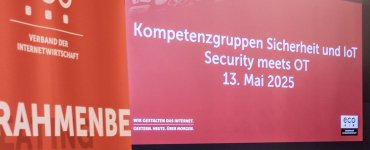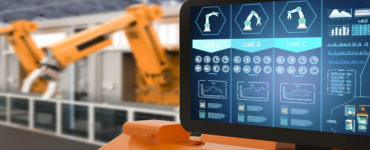Digital solutions can help achieve sustainability goals, says Cloudflare CFO Thomas Seifert. In this interview, he names tools and gives examples of how companies can track and reduce their individual carbon footprint.
Mr. Seifert, how can the Internet contribute to achieving sustainability goals and protecting the climate?
Whether it’s using cloud platforms to deliver services and documents or Smart Parking in the Smart City, digital solutions can help achieve sustainability goals. However, we must not forget that all Internet-based technology also has an impact on the climate. While this impact can be reduced, the Internet is currently still far from being a “green” technology in itself. It causes about two percent of total CO2 emissions, or about one billion tons of CO2 per year. As such, it has a similar impact on our environment as the global aviation industry. As Cloudflare provides a significant part of the Internet infrastructure, our main focus is also on the impact of the Internet on the environment.
As an expert for Internet infrastructures, what is Cloudflare’s contribution to this?
Cloudflare aims to contribute to developing a CO2-free Internet. Our global network already makes 17 percent of the entire Internet faster and more secure. This network is already running on 100 per cent renewable energy. In addition, Cloudflare will offset all CO2 emissions that have occurred since our network went live in 2010. We are continuously working on our efficiency to ensure Internet security, performance and reliability on a global scale. In doing so, we have found that we can also do this in a sustainable way and the effects are already being felt. Our aim is to help create a more sustainable Internet and provide a fresh start; as such, we are counterbalancing our existing climate footprint. We are certain that this will not only lead to a better climate balance. Our customers – including nonprofit organizations and 19 percent of Fortune 1000 companies – also benefit from more efficient and potentially less expensive products.
To enable our customers to track and reduce their individual carbon footprint, a number of new tools have been published. For example, enterprises and developers can move portions of their compute workloads to Cloudflare’s edge network, which is powered 100 percent by renewable energy. In addition, every customer has access to their own Carbon Impact Report, which not only portrays their individual CO2 footprint, but also makes it trackable.
How do you align reducing your environmental footprint with cybersecurity?
At Cloudflare, we have been developing technical solutions from the very beginning that allow us to distribute loads across our network. This means that the traffic peaks caused by cyber attacks cannot affect us and enables us to make efficient use of all available capacities. We process requests on a decentralised basis instead of having to forwarding them to huge data centres on the other side of the world. As a result, our customers benefit from a better environmental balance of their online presence. Our security and performance services such as WAF, network firewall and DDoS defence also allow our customers to take certain hardware out of service. They can instead use software that efficiently runs over our edge network. As less energy is used for online activities when they run over our infrastructure, the carbon footprint is also reduced – without compromising security, performance and reliability.
How digitalisation makes the Smart City more sustainable is shown in the study “The Smart City Market in Germany, 2021-2026” by eco and Arthur D. Little.




